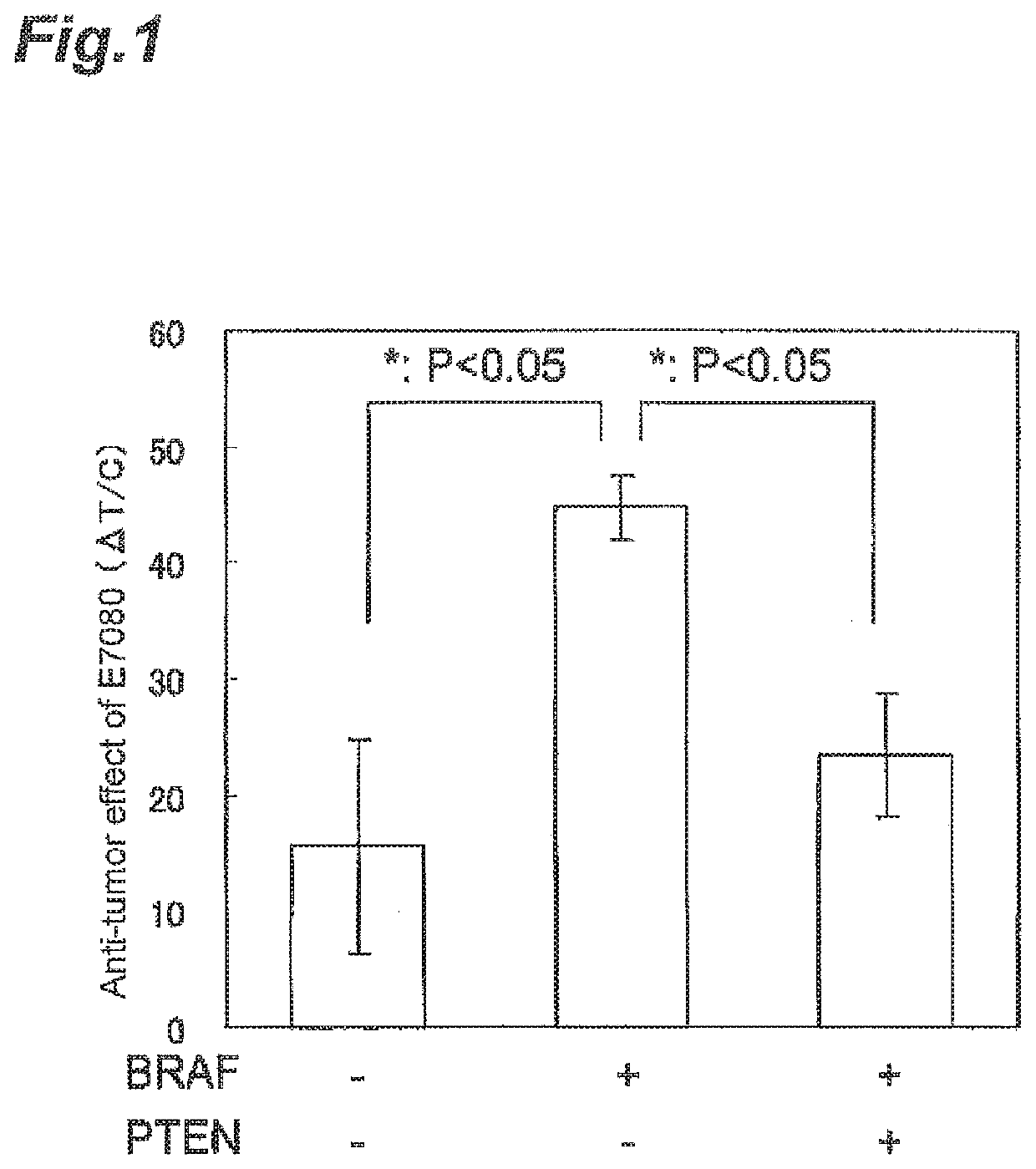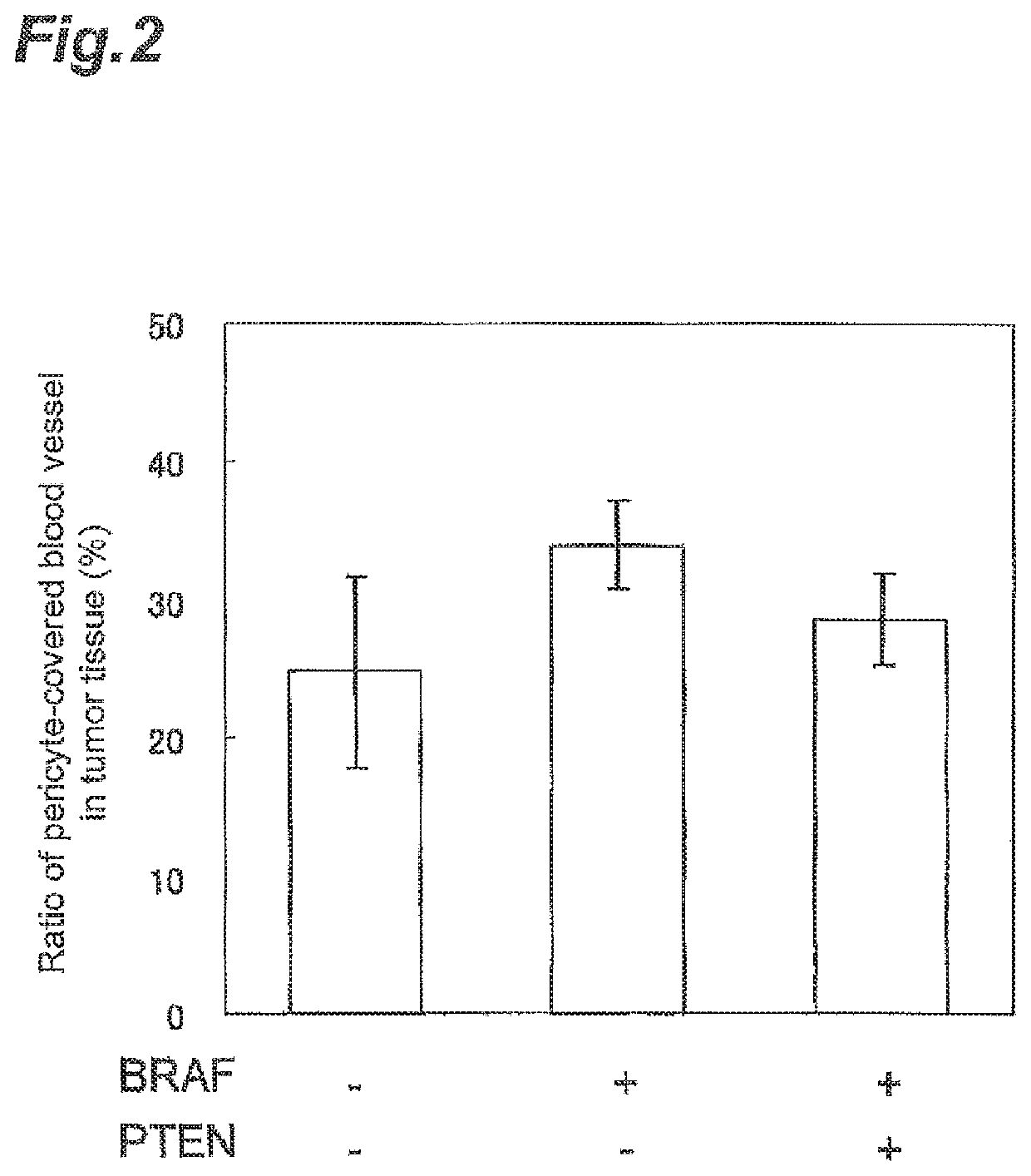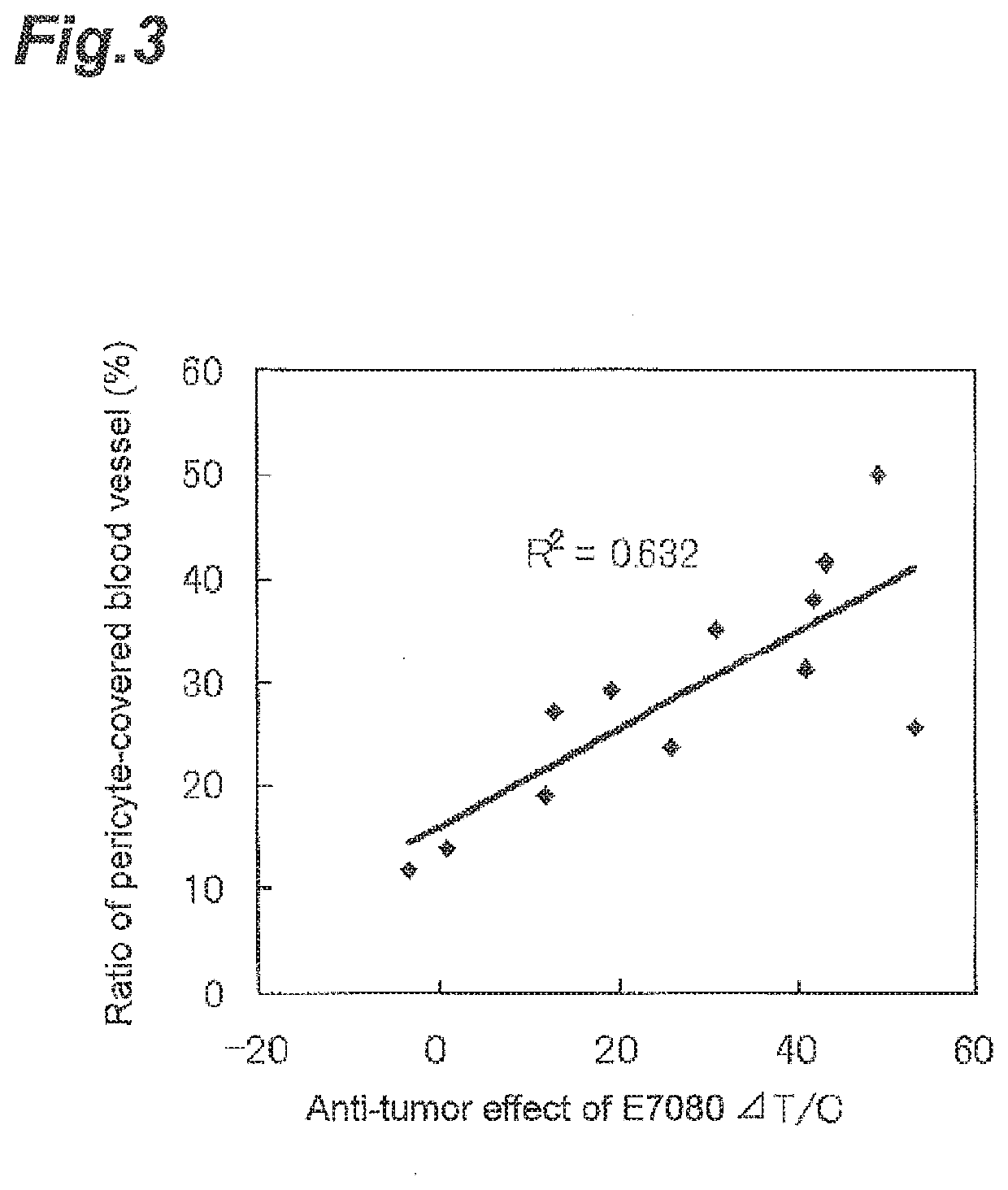Method for Predicting Effectiveness of Angiogenesis Inhibitor
an angiogenesis inhibitor and effectiveness prediction technology, applied in the field of method for predicting the effectiveness of angiogenesis inhibitors, can solve the problems of high metastaticity of advanced malignant melanoma, unapproved anticancer agents for all types of cancer, and extremely poor prognosis, so as to reduce the risk of side effects
- Summary
- Abstract
- Description
- Claims
- Application Information
AI Technical Summary
Benefits of technology
Problems solved by technology
Method used
Image
Examples
example 1
Detection of Mutation or Loss of Expression of BRAF and PTEN
[0360]Human melanoma cell lines, SK-MEL-2, MeWo, CHL-1, HMV-1, HMCB, MDA-MB-435, LOX, G361, FEM, SEKI, SK-MEL-28, A375 and A2058 were each obtained from the manufacturers shown in the column of “distributor” of Table 6 and analyzed by the Sanger method or a next generation sequence method (Bridge PCR method: Solexa / Illumina) to detect a mutation or loss of expression of BRAF and PTEN.
[0361](1) Detection by the Sanger Method
[0362](i) Preparation of Genomic DNA from Melanoma Cell Line
[0363]Genomic DNA was purified from cells (about 1×106) by use of DNeasy Blood & Tissue Kit (purchased from QIAGEN).
[0364](ii) Amplification of PTEN Exon Region
[0365]The obtained genomic DNA was subjected to PCR to amplify the exon region of PTEN. PCR was performed by PrimeSTAR GXL DNA Polymerase (purchased from Takara Bio Inc.). Genomic DNA (100 ng), 5× PrimeSTAR GXL Buffer (4 μL), a dNTP mixture (2.5 MM) (1.6 μL), a sense primer and an anti-sen...
example 2
Calculation of Anti-Tumor Effect of Angiogenesis Inhibitor on Mouse Model Grafted with Melanoma Cell Line
[0386]The human melanoma cell lines used in Example 1 were respectively cultured in the mediums shown in the column of “Culture medium” (containing 10% FBS) of Table 6 until about 80% confluency was obtained (in an incubator under 5% carbon dioxide gas). After culturing, cells were collected by trypsin-EDTA treatment in accordance with a conventional method. The cells were suspended with a phosphate buffer or a matrigel solution (mixture of phosphate buffer and matrigel in a common ratio of 1:1) to prepare suspension solution of 1×108 cells / mL or 5×107 cells / mL. The cell suspension (0.1 mL) was subcutaneously grafted to the side of the body of each nude mouse. In this manner, human melanoma cell line grafted mouse models were prepared.
[0387]After grafting, from the time point when a tumor volume reached about 200 mm3, a mesylate of 4-(3-chloro-4-(cyclopropylaminocarbonyl)aminophe...
example 3
Correlation with the Ratio of Blood Vessels Covered with Periderm Cells (Pericytes) Depending Upon the Presence or Absence of a Mutation or Loss of Expression in BRAF and PTEN
[0390]As a result of imperfect angiogenesis in a tumor tissue, a phenomenon where blood vessels covered with periderm cells is not formed is observed. In the case where the tumor cells were classified based on the presence or absence of a mutation or loss of expression in BRAF and PTEN, whether the ratio of blood vessels covered with periderm cells changes or not was investigated.
[0391]Human melanoma cell line grafted mouse models were prepared using the human melanoma cell lines used in Example 1 in accordance with the method of Example 2. After grafting, at the time point when a tumor volume reached about 100-300 mm3, the mouse was sacrificed with CO2 and the grafted tumor tissue was excised out by a surgical operation.
[0392]Thereafter, from the tumor tissue excised out, a tumor tissue sections were prepared....
PUM
 Login to View More
Login to View More Abstract
Description
Claims
Application Information
 Login to View More
Login to View More - R&D
- Intellectual Property
- Life Sciences
- Materials
- Tech Scout
- Unparalleled Data Quality
- Higher Quality Content
- 60% Fewer Hallucinations
Browse by: Latest US Patents, China's latest patents, Technical Efficacy Thesaurus, Application Domain, Technology Topic, Popular Technical Reports.
© 2025 PatSnap. All rights reserved.Legal|Privacy policy|Modern Slavery Act Transparency Statement|Sitemap|About US| Contact US: help@patsnap.com



